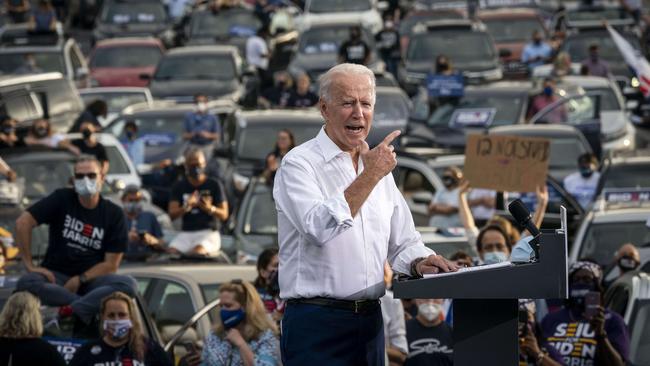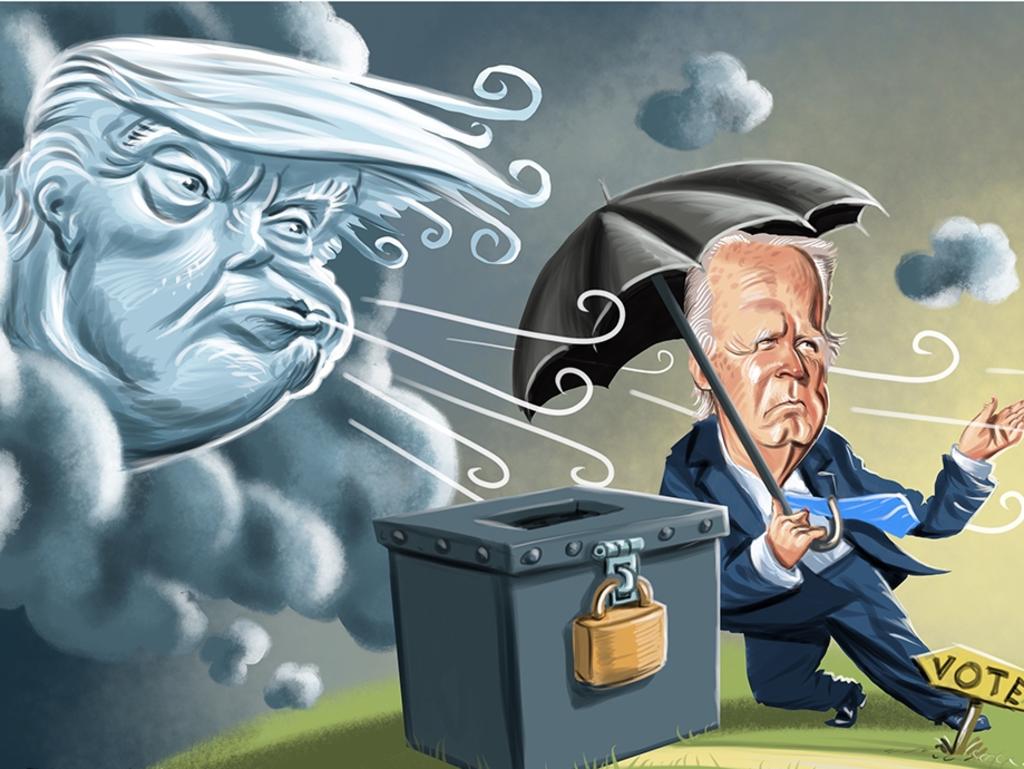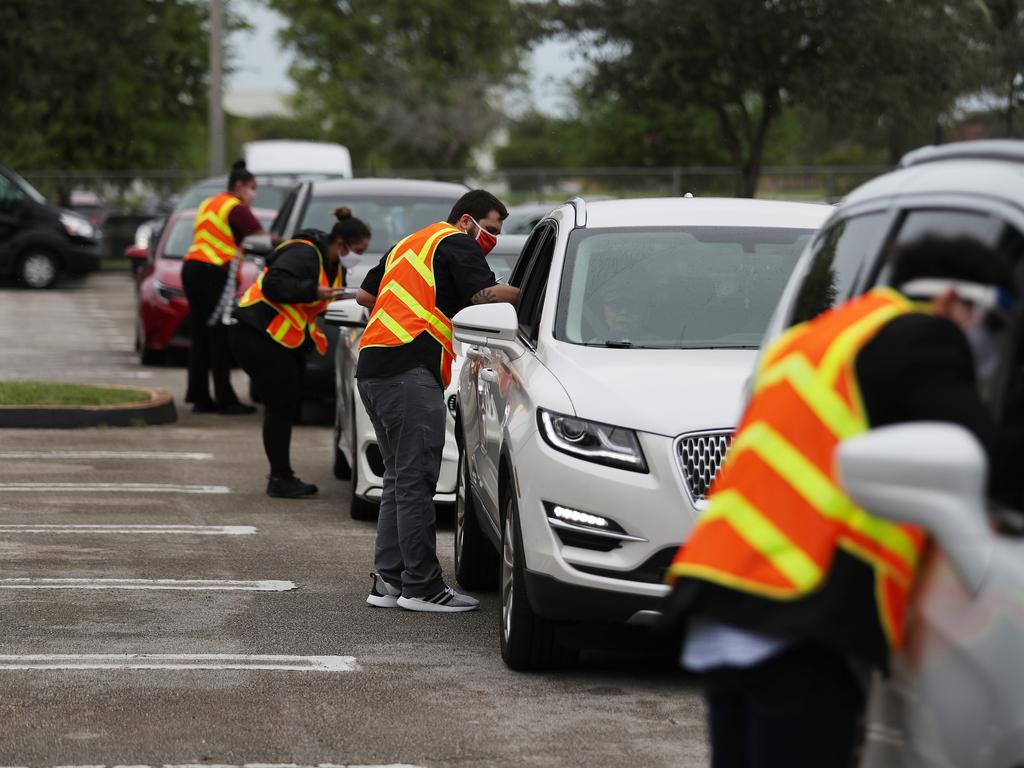
“The polls were wrong in 2016 and they’ll be wrong again,” they say. So you don’t believe that Biden is ahead of Trump by more than seven points nationally? I ask. “No way. Not even close. Trump is a landslide.”
The polling industry in the US is still recovering from the historic black eye it received in 2016 when the polls fooled people into thinking Hillary Clinton would defeat Trump.
Since then pollsters have been trying to improve their poll methods so that this 2020 election gets it right and restores faith in the very notion of political polls.
So what has been done and are these 2020 polls correct when they say Biden has a solid lead over the President with only six days to go until the November 3 ballot?
Firstly, polls in the US only try to predict the overall majority of votes. They can’t predict the electoral college votes in each state that determine the winner of the US election.
In 2016 the national polls were widely criticised for stating that Clinton was leading Trump by 3.2 points on election day. In fact, she won the popular vote by two points, or three million votes — within the margin of error of most polls. What the polls failed to predict was the almost perfect path that Trump carved through the battleground states, winning key states such as Michigan, Wisconsin and Pennsylvania by a slither on his way to amassing the 270 electoral college votes needed for victory.

The state polls, which were less sophisticated, were less accurate.
In 2020, even if the same poll errors in 2016 were applied to current poll rating, Biden would probably win the presidency if he is ahead by any more than four points nationally on election day.
That is why Trump needs to reduce Biden’s lead quickly from its current 7.4 points before next Wednesday (AEDT).
Pollsters think there are reasons to believe the current polls are more accurate than in 2016.
When pollsters reviewed their methods in 2016, they uncovered some mistakes that most, but not all polls, have since rectified.
Many state pollsters in 2016 failed to adequately adjust their samples to accurately represent voters without a college degree.
This demographic — which are more likely to vote for Trump — are less likely to respond to phone surveys than voters with college degrees, who are more likely to vote Democrat.
“In mid-2016, we changed our weights by education, moving the percentage of high school or less respondents up while dropping the college-plus down,” says Jeff Horwitt, a senior vice-president at Hart Research, one of the pollsters for the NBC News/Wall Street Journal poll. Pollsters hope this change will reduce or remove the phenomenon of the “hidden Trump vote” where pollsters did not anticipate the size of the turnout for Trump.
Other polls have added more layers of research to improve accuracy, including the weighting of whether voters live in a city or in regional or rural areas.
State-based polls, the biggest culprits of 2016, are also more sophisticated that they were.
“There is more polling in battleground states this year, and that is especially true for some of the upper midwest states that proved decisive in 2016,” Courtney Kennedy, Pew Research Centre’s director of survey research, told poll website FiveThirtyEight. “There has also been an uptick in the volume of state polling done by major, reputable polling organisations that use more rigorous methods.”

But whether this leads to greater accuracy remains to be seen. Most major polls in the US have different methods, which explains why their findings can vary widely. The most widely cited poll is the RealClearPolitics average of polls because by averaging out the differences between all polls, it is less likely to report a widely inaccurate finding.
Right now, according to RCP, Biden’s lead over Trump in the battleground states is roughly similar to Clinton’s lead over Trump in the closing stages of the 2016 campaign. But his national lead is significantly larger, at 7.4 points compared with just 2.2 points for Clinton at this stage of the race.
In theory, Biden is in a strong position here, but there are variables that will give heart to Trump supporters.
Firstly, as in 2016, the polls don’t tell us how the electoral college votes will actually fall. Secondly, voter turnout may be very different on the day to what the polls expect, especially in the middle of a pandemic. And lastly the so-called silent Trump voters may still be hiding in large numbers despite the pollsters’ efforts to find them.
The industry of US political polling has never been tested like it will be in this result. If polls don’t pick the president this time around, will anyone really believe in them again?








On the election trail, the first thing almost every Donald Trump supporter tells me is that they don’t believe the polls that show Joe Biden is leading.